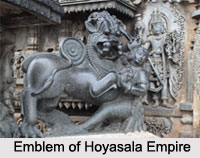 History of Mysore has a long and interesting tale of the Wodeyar Dynasty, British Imperialism and the Indian Freedom Struggle. Mysore or Mysuru has mythological history also.
History of Mysore has a long and interesting tale of the Wodeyar Dynasty, British Imperialism and the Indian Freedom Struggle. Mysore or Mysuru has mythological history also.
Derivation of Mysore
The very word "Mysore" came from the stained version, "Mysooru" or "Mysuru" that is derived from the phrase "Mahishura" or "Mahishasurana Ooru". This means the town of Mahishasura in Kannada language, the local language of the Indian state of Karnataka.
Mythological History of Mysore
According to the mythological history, Mahishasura was a demon Mahisha with a buffalo head, who ruled the Earth. He tortured the people and the gods and goddess and captured Heaven. The goddesses and gods invoked Goddess Parvati to save themselves. From there, took the birth of Chamundeshwari. Goddess killed the monster on top of the Chamundi hills near Mysore.
Hence the hill and the city have the names Chamundi Hill and Mysore respectively. According to the folklore, it is said that after killing Mahisasura, the Goddess stayed on top of Chamundi hills. There located a temple dedicated to the Goddess Chamunda. 
Early History of Mysore
Early history of Mysore stated the rise and fall of many empires of Hindu and Muslim dynasties. Before the rise of the Ganga Dynasty of South India, in the 10th century there was little historical evidence associated with Mysore. The Gangas set up their power in the 2nd century and they ruled over a large part of Mysore till about 1004. In the 3rd century they established their capital at Talakad on the banks of the Kaveri River.
On Chamundi Hills, there is an inscription that was done in the year 950 AD during the reign of the Ganga Dynasty. This inscription is the oldest inscription found in Mysore or Mysuru. After the Ganga Dynasty, the Chola Dynasty ruled Mysore for over a century. The Chalukyas followed the Cholas.
The Hoysala Empire drove the Chola Dynasty from the remaining part of Mysore region in the 12th century. Hoysalas had a vast contribution in erecting the temples with great architectural skills. Hoysalas also reconstructed the existing temples in Mysore and on the Chamundi Hills, which proved the inscription that dated in 11th to 12th Century.
Medieval History of Mysore
Medieval History of Mysore began with fall of Hoysalas. After the Hoysalas came the kings of Vijayanagar Empire and then the Yadu dynasty came of Mysore to power in the year 1399. They were the feudatories of the Vijayanagar Kings. The feudal lords and the Vijaynagara Empire had the vast contribution in erecting the temples in Mysore. After the downfall of Vijaynagara, the Wodeyar Dynasty began to rule till Tipu Sultan emerged in power. During Wodeyar Rule, The kings of Wodeyar Dynasty built a fort to save the city from Islam invasion. Lastly, the Wodeyar moved the capital from Mysore to Srirangapatna. After the downfall of Tipu Sultan in 1799, Mysore became the capital of the Wodeyars once again.
Modern History of Mysore
After the decline of Tipu Sultan in the Battle of Seringapatna, with the hands of British Empire in India, Princely State of Mysore was formed and Bengaluru became the seat of administration. The former rulers of Wodeyar Dynasty were reinstated as puppet sovereigns and after the independence of India in 1947, Wodeyars lost its importance except Mysore Palace as a tourist spot.



















